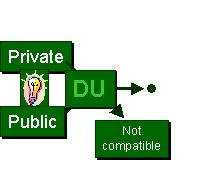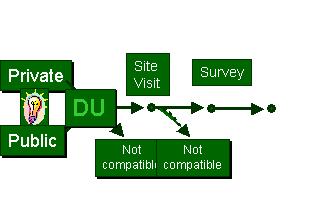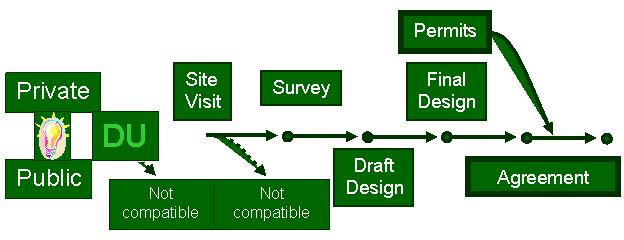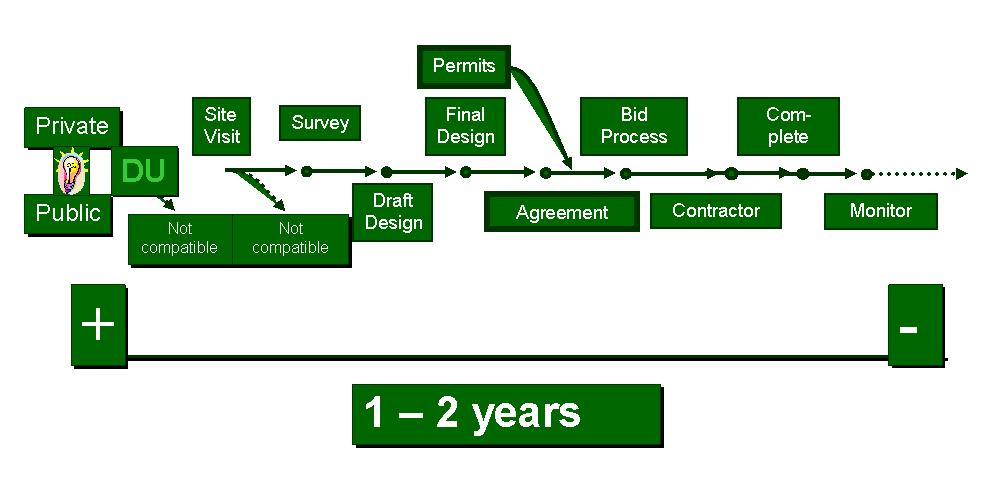Understanding the Timeline for a DU Project
(This timeline was taken from a presentation given by Jasper Lament, Manager Conservation Programs, Ducks Unlimited National Headquarters)
 A project idea is evaluated: Geographic location; consistency with DU international Conservation plan; capability of proper management; feasibility; cost efficiency and cost are considered. Funding partners are also a necessary consideration. Common partners are: State wildlife agencies; U.S. Fish and Wildlife Service; USDA-Natural Resources Conservation Service; North American Wetlands Conservation Council; Private landowners; Resource conservation agencies and various other sources. If it is determined that this project is not a good investment of DU's resources the project is dropped at this point.
A project idea is evaluated: Geographic location; consistency with DU international Conservation plan; capability of proper management; feasibility; cost efficiency and cost are considered. Funding partners are also a necessary consideration. Common partners are: State wildlife agencies; U.S. Fish and Wildlife Service; USDA-Natural Resources Conservation Service; North American Wetlands Conservation Council; Private landowners; Resource conservation agencies and various other sources. If it is determined that this project is not a good investment of DU's resources the project is dropped at this point.
A site visit by either a Regional Biologist and/or Regional Engineer is the next step. Again an assessment is made, is this project a good investment of DU's resources? If not the project is dropped.


At this point the bid process begins. Potential contractors attend a site showing and are given a bid packet containing design specificiations. Bids are received a contractors are selected. The Regional Engineer and Engineering Techs are involved in this process. (30-45 days)


Ducks Unlimited uses cookies to enhance your browsing experience, optimize site functionality, analyze traffic, and deliver personalized advertising through third parties. By continuing to use this site, you agree to our use of cookies. View Privacy Policy